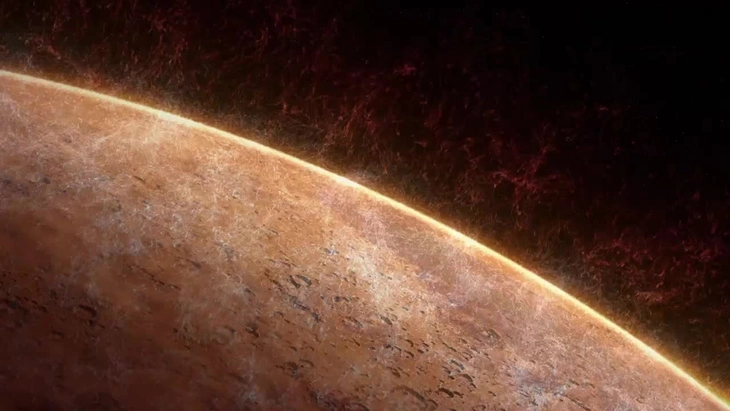
Mars once had rivers, lakes and a wet climate billions of years ago. But over time, the planet's magnetic field weakened, the atmosphere was washed away by solar winds, and surface water disappeared - Photo: NASA
According to National Science Review , an international team of scientists from the Chinese Academy of Sciences , Australian National University and the University of Milano-Bicocca (Italy) have discovered signs that liquid water may exist under the surface of Mars.
Signs of liquid water from Mars' underground
The team analyzed seismic data collected by NASA’s InSight spacecraft. The results showed that there was an unusually slow-moving seismic wave phenomenon at depths of 5.4km to 8km below the ground. This is a characteristic sign of a layer of porous rock saturated with water.
Professor Hrvoje Tkalčić, a geophysicist at the Australian National University, said the amount of water contained in this layer of rock could be equivalent to an ocean covering the entire surface of Mars, 520 meters to 780 meters deep.
Billions of years ago, Mars had rivers, lakes, and a wet climate. But over time, the planet's magnetic field weakened, the atmosphere was stripped away by solar winds, and surface water disappeared.
Previously, scientists thought that some of the water had evaporated, while the rest was frozen at the poles or "locked" in minerals. However, these hypotheses still did not explain all of the water that once existed.
This new discovery adds to the possibility that water has seeped deep into the ground and is trapped in porous rock layers, similar to underground aquifers on Earth.
Hope for survival and resource exploitation

New research suggests that rather than disappearing completely, much of the water on Mars may have seeped deep into porous rock layers and become trapped underground, remaining there for billions of years as a giant undiscovered aquifer - Photo: NAS
The discovery of underground liquid water not only helps decipher the climate history of Mars, but also opens up great prospects in the search for life beyond Earth.
On Earth, some forms of microorganisms can live deep underground in environments rich in water and energy. If similar conditions exist on Mars, underground life is entirely possible.
Additionally, if confirmed, this underground water source would be a valuable resource for future exploration missions, potentially being used to provide water, generate oxygen, and even produce fuel for long-duration missions.
Scientists stress that while the discovery is promising, more data is needed to confirm the existence of this layer of liquid water. Future missions capable of drilling deeper and measuring seismic data will be key.
"We have only heard a very small part of the 'heartbeat' of the Red Planet. There are many secrets waiting to be discovered below the surface of Mars," said Professor Tkalčić.
Source: https://tuoitre.vn/phat-hien-lop-nuoc-long-khong-lo-duoi-long-dat-sao-hoa-20250513153422593.htm


































































































Comment (0)